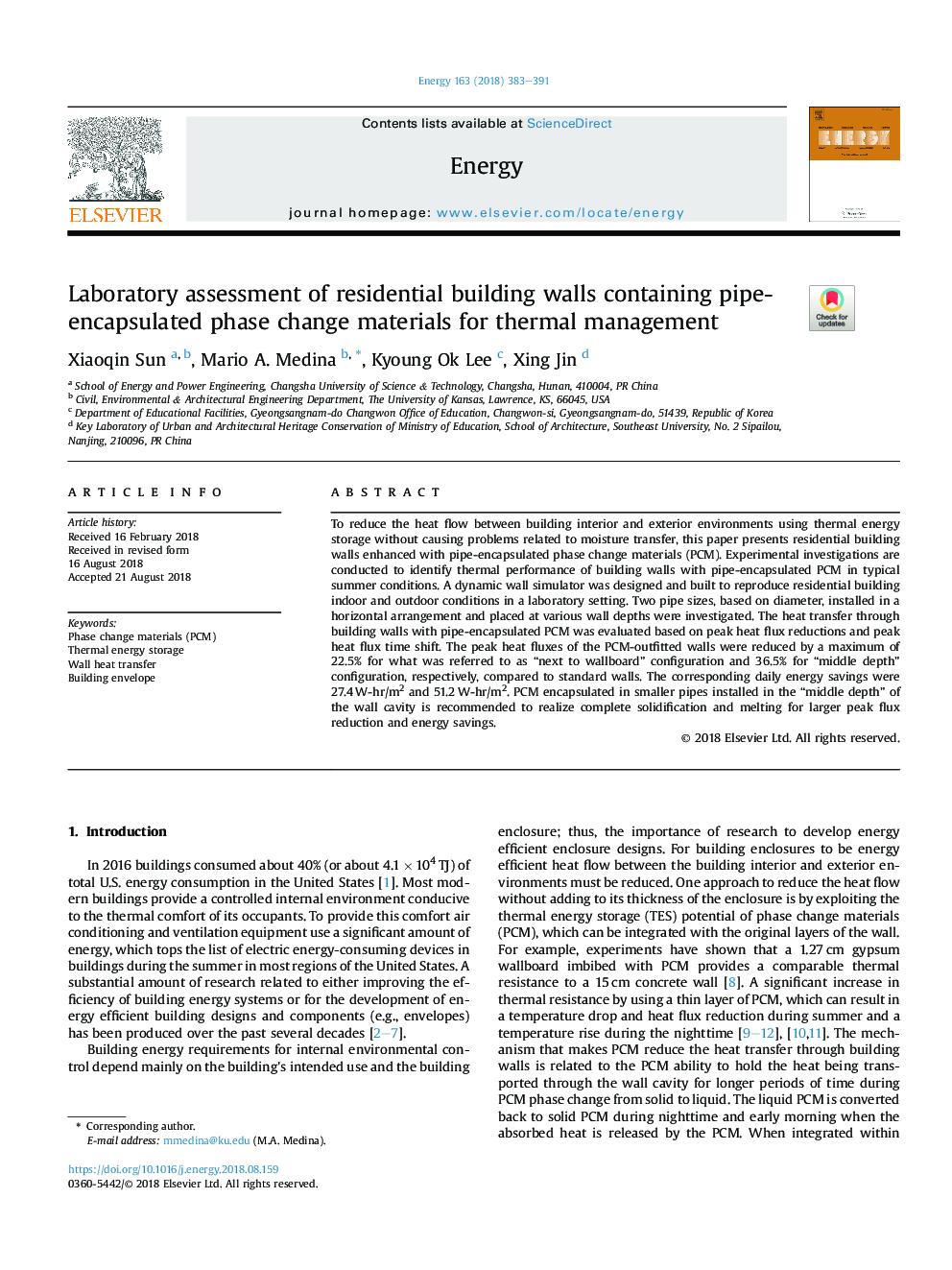| Article ID | Journal | Published Year | Pages | File Type |
|---|---|---|---|---|
| 8948743 | Energy | 2018 | 9 Pages |
Abstract
To reduce the heat flow between building interior and exterior environments using thermal energy storage without causing problems related to moisture transfer, this paper presents residential building walls enhanced with pipe-encapsulated phase change materials (PCM). Experimental investigations are conducted to identify thermal performance of building walls with pipe-encapsulated PCM in typical summer conditions. A dynamic wall simulator was designed and built to reproduce residential building indoor and outdoor conditions in a laboratory setting. Two pipe sizes, based on diameter, installed in a horizontal arrangement and placed at various wall depths were investigated. The heat transfer through building walls with pipe-encapsulated PCM was evaluated based on peak heat flux reductions and peak heat flux time shift. The peak heat fluxes of the PCM-outfitted walls were reduced by a maximum of 22.5% for what was referred to as “next to wallboard” configuration and 36.5% for “middle depth” configuration, respectively, compared to standard walls. The corresponding daily energy savings were 27.4â¯W-hr/m2 and 51.2â¯W-hr/m2. PCM encapsulated in smaller pipes installed in the “middle depth” of the wall cavity is recommended to realize complete solidification and melting for larger peak flux reduction and energy savings.
Related Topics
Physical Sciences and Engineering
Energy
Energy (General)
Authors
Xiaoqin Sun, Mario A. Medina, Kyoung Ok Lee, Xing Jin,
